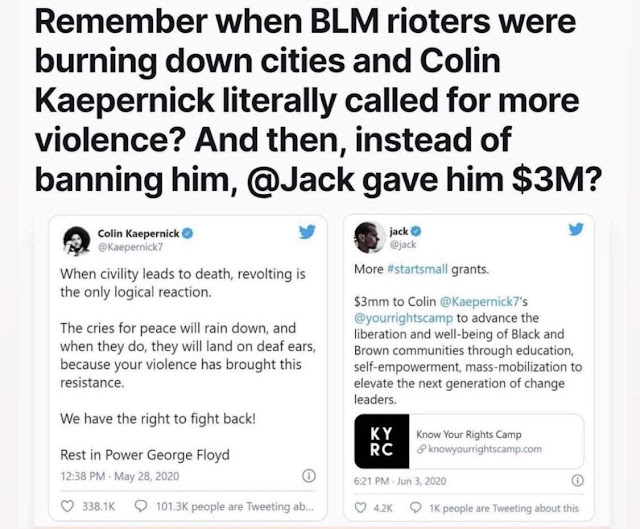Saving the White Race: The Problem and Solutions, Part 1 of 3
Note on usage: In this essay the racial designation “White” is capitalized when used to mean racial Europeans and not capitalized (i.e., “white”) when following common and official usage that includes non-European Caucasians, such as Middle Easterners and North Africans, and semi-European Caucasians, such as Ashkenazi Jews, in the “white” racial category.
Almost from the beginning of my thinking and writing about the existential crisis facing the White race I thought that the two most basic and essential pieces of knowledge that we needed to instill in our people were the enormous reality of the problem itself and the possible solutions to the problem, without which there can be no purpose to motivate constructive action and no goal to give us direction and guide us forward. Since the end of World War II, these two vital pieces of knowledge have been totally missing from the dominant, mainstream culture, which effectively censors or ignores them, or dismissively denies and condemns any rare mention of them that might emanate from the fringes, to sustain a general ignorance on the subject. This is not surprising, given that the dominant culture is intent on subjugating, dispossessing, replacing, and destroying the White race, not on saving it.
In brief, the problem is the ongoing dispossession and destruction of the White race. The cause of this problem is multiracialism, which is caused by non-White immigration which in turn causes racial intermixture, which is not possible without it. The solution to the problem is to replace multiracialism with racial separation—to restore the racial environment in which the White race existed in the many thousands of years prior to its settlement of the Americas—the environment that continued to exist in Europe until after World War II. The problem is existential in scale, with the continued existence of the White race at stake. A sufficient solution to an existential problem is one that effectively preserves and continues the existence of the White race—and not only a small fraction of it but the far greater part that can still be saved. This should be the purpose of any genuine racial preservation program.
I want my race to live. But it is being destroyed. How and why is this happening? The how and the why of the problem is one and the same as the cause given above: multiracialism, i.e., the inclusion of multiple races in the same political jurisdiction. Multiracialism is the direct and necessary condition of our racial apocalypse, the end of our existence. Multiracialism makes possible, enables, and indeed causes racial destruction through a combination of racial replacement and intermixture. Racial intermixture cannot occur without multiracialism, and with it can hardly not occur. It makes racial intermixture, and the racial destruction it causes, all but inevitable.
Multiracialism is the direct cause of White destruction, but why then do we have multiracialism? It is obvious why non-Whites support the multiracialization of White countries. It is in their racial group interest to do so because it secures their presence in White countries. But as their presence in White countries continues to grow, it is becoming more than presence. It is becoming power, control and dominance, and the White populations, in addition to racial disempowerment, increasingly suffer subjugation, and eventually persecution. But why have Whites supported, and continue to support, multiracialism and the consequent process of their racial dispossession? Why do they act against their ultimate existential interests? Why, in short, are so many Whites, literally or effectively, anti-White? Why is the White race so maladaptively and pathologically against itself and its existence?
There are two false premises or assumptions that help to sustain popular acquiescence and passive resignation to the anti-White status quo. One is the myth of stasis—the false premise or assumption that things will remain basically as they are with little or no significant change, so there is no problem, no need for a solution, and nothing needs to be done. This complacency-inducing premise had a certain credibility before World War II, or even before the 1960s, but the accelerating pace of racial and cultural change since then makes it increasingly difficult to sustain short of a delusional — and perhaps fearful or ideological — blindness that denies all the evidence of one’s own eyes. Yet the indications are that this myth is the operative worldview of the majority of Whites, rendering them effectively ignorant, with little or no awareness of the great changes happening to their race. Those few White politicians who have publicly acknowledged it have been those, like Bill Clinton and Joe Biden, who welcome it as a positive development. The second false premise or assumption is the myth of inevitability, acknowledging that the process of White replacement and destruction by multiracialism is occurring but believing that there are no feasible and morally acceptable alternatives, so it is inevitable and nothing can be done to prevent it. Both of these false premises—static permanence or inexorable inevitability—can in large part be attributed to a failure of imagination and vision, the inability to conceive or see other alternatives. But the simple fact is that there are other possible alternatives and solutions. There is a pathway out of the darkness and toward the light, away from racial death and toward racial life, as many, including this author, have proposed.
People and movements are defined both by what they are for and what they are against. When a solution — the positive “what they are for” — is missing, the response to a problem — the negative “what they are against” — can have little meaningful effect. Sometimes what one is for and what one is against is a very simple matter of either-or. In the matter at issue, either one is for continued White racial existence and independence—a position the dominant anti-White culture condemns as “racism” and “hate” (its code words for pro-White), or one is against them, the dominant “politically correct” position described as “anti-racism” and “anti-hate” (its code words for anti-White). In such cases, when there are only two choices, knowing what someone is against should, if they are logically consistent, indicate what they are for; however they might refuse to acknowledge it. So either one is for the preservation and independence of the White race, or one is against them. If one is for them, if one wants the White race to live and be free, logical consistency dictates one also support racial separation as the required condition for both, and then it also follows that one be against multiracialism. If one is against White existence and independence and therefore wants the White race to be subjugated and destroyed, then logic dictates one be for multiracialism as the most effective means to realize this end. The label “White preservationist” describes people by what they are for, not what they are against. The crucial point is that preservationists are not just against something, but are for something—for White racial preservation, and should place as much or more emphasis on what they are for as on what they are against.
Part I. The Problem
“Something is happening: we are becoming the first universal nation in history….if you believe, as the author does, that the American drama is being played out toward a purpose, then the non-Europeanization of America is heartening news of an almost transcendental quality.” Ben J. Wattenberg, The Good News is the Bad News is Wrong (New York: Simon and Schuster, 1984), 84.
“In a little more than 50 years, there will be no majority race in the United States. No other nation in history has gone through demographic change of this magnitude in so short a time.” President Bill Clinton Commencement Address at Portland State University, Portland, Oregon, June 13, 1998.
“[W]hen one population moves into a region occupied by another population with which it can interbreed, even a small rate of interbreeding is enough to produce high proportions of mixture in the descendants.” David Reich, Who We Are and How We Got Here: Ancient DNA and the New Science of the Human Past (New York: Vintage Books, 2019), 43.
“I think that the Dutch will in the long run disappear. The [non-White immigrant] ethnic groups’ population growth is much faster than that of the Dutch. It is obvious that this process will continue, even after the year 2100. This is the trend worldwide. The white race will in the long term become extinct. I don’t regard this as positive or negative. Apparently we are happy with this development.” Jozef Ritzen, Dutch Minister of Education and Sciences, interview in Algemeen Dagblad, Rotterdam, December 11, 1989, 1.
The crisis of White racial survival began with the colonization of the Americas and the resulting bringing together of previously separated races. But it was not the Spanish and Portuguese colonization of “Latin America” beginning in the sixteenth century that caused it. Even though it was the home of over 90% of the African slave trade and 90% of the aboriginal Amerindian population, it played little or no role in the development of the problem now threatening the White race. What Harvard geneticist David Reich calls “The Great Mixing”[1] in Latin America was effectively completed by the beginning of the nineteenth century, forming the racial patterns of the region that persist to this day and didn’t really spread beyond those confines until the 1960s, when the racial problem had already started to metastasize through the Western World. The current racial problem began with the importation of African slaves into the English colonies of North America beginning in 1619. By the time of the first United States census in 1790 they numbered 757,208, or 19.3% of the total population of 3,929,214. The combination of their presence and the dispute over their status was the primary cause of the American Civil War of 1861–65, after which the racial situation restabilized into a White supremacist modus vivendi that lasted with little change, with one exception, until World War II. The exception was the mass immigration of Jews, beginning in the 1880s. Jews soon increased their power and used it to agitate against the pro-White status quo. Critical to their success was that they formed alliances in a campaign to promote unrestricted mass immigration, such as the “Black-Jewish Alliance”[2] which subsequently expanded into a broad coalition of anti-White elements as other groups achieved significant numbers.
This Anti-White Coalition, whose power increased after World War II, achieved cultural and political dominance in the 1960s. It consists of Jewish and non-White racial groups whose interests conflict with White interests in alliance with the varied White elements who are against their own race. It effectively dominates the entirety of the Democratic party, as well as the pro-immigration, globalist, anti-nationalist and “neo-conservative” establishment of the Republican party, the federal agencies and bureaucracies, the universities and educational system, most of the judiciary, and most of the private business and corporate world, especially the financial sector and the communications, news, entertainment and social media. This anti-White power structure promotes multiracialism, non-White immigration and racial intermixture and thereby opposes the most important and fundamental interests of the White race: its continued existence and control of its own existence. This coalition more generally tends to support any policy — whether stemming from misnamed “liberalism” and “progressivism” or the more radically anti-White Racial Marxism — that is contrary to White interests.
The motivations and psychology of the Whites and non-Whites in the Anti-White Coalition are not the same. In fact, they could hardly be more opposite. The non-Whites are acting in the interests of their own racial groups, ruthlessly partisan and loyal to their own group in a manner as natural and healthy as it is intensely and primitively subjective. The Whites are acting against their own race and its most vital interests, their minds infected with a pathological and perverse disease that has overthrown and reversed the natural bonds of loyalty and affection, rejecting their ancestors, heritage, civilization, culture and history, expressing guilt and begging forgiveness for their ancestors’ alleged sins and their “white privilege,” something which — like “white supremacy” — could only exist in multiracial countries, since in monoracial White countries there are no non-Whites for Whites to have supremacy over or be privileged above.
Whoever supports multiracialization supports the cause of White racial destruction, if not actively then at least passively, whether admitting it to themselves and others or not. In the receding past, the Anti-White Coalition was too wary to admit this fact, hiding it behind layers of obfuscation, denial and outright lies. This is less-and-less the case, with the end results of its long-advocated policies more-and-more openly acknowledged as something totally positive to be joyfully welcomed and celebrated by all, even by the Whites whose race is being destroyed, and woe to those who see it otherwise.
In the aftermath of World War II, nationalist and pro-White elements were broadly associated or connected with “Nazism” and the Holocaust to discredit them and confine them to the disreputable political and cultural fringes. On the European continent they were officially purged, with hundreds of thousands killed (especially in France), imprisoned or removed from governmental, educational or business positions. In most European countries (later joined by Canada) the completion of the purge was followed by a ban — subject to fines, loss of position or imprisonment — of pro-White activity or dissent from the standard Holocaust narrative. Thus the elements that would have most strongly opposed the post-war multiracialization of Europe and the West generally, were removed from the scene, effectively clearing the path to White replacement and destruction.
Reductio ad Odium, Reductio ad Hitlerum and Reductio ad Holocaustum refer to three common reductionist responses to any pro-White position, policy or argument, dismissing it by equating it with one or more of the three “H’s” — Hate, Hitler or the Holocaust. According to this “logic,” Whites loving their own race and wanting it to continue to exist and be independent, is really hate for other races, on the grounds that non-Whites are the moral center of the universe so that any positive feelings toward the White race are illegitimate.
When I first began to express pro-White ideas during my university days, a common reaction was the equation of my position with “Nazism” and the Holocaust. When I visited Uppsala University in Sweden in 1989, I saw many posters around campus that read “Fight Nazism — Support Immigration,” advertising an upcoming rally in support of non-White immigration as the means to oppose and defeat Nazism. Leading Jewish activist Earl Raab, addressing a Jewish readership in 1993, wrote “We [i.e., Jews] have tipped [the population] beyond the point where a Nazi-Aryan [i.e., pro-White] party will be able to prevail in this country.”
The above are just a few examples of the common identification of the White race and its most vital interests with “Nazism.” As they illustrate, since World War II, the Anti-White-Coalition’s never-ending and ever-expanding campaign against the White race and its interests has regularly been rationalized as a continuation of the war against “Nazism.” In this campaign, both “Nazism” and “Fascism” no longer refer to political or economic systems or philosophical ideas but exclusively to race, specifically to the White race, and particularly to any person or idea that is pro-White. Thus the label “Antifa,” short for Anti-Fascist, in practice actually means anti-White, and especially “anti” anything that is pro-White. The application of the “Nazi” label, and its connection to the Holocaust, has been expanded to include any who oppose the anti-White multiracialist agenda of White dispossession and destruction by non-White immigration and racial intermixture. The indoctrination in the Holocaust as a weapon in support of the anti-White agenda is perhaps the most pernicious aspect of this campaign, used to justify White racial replacement and the suppression of pro-White speech and activity.
The great majority of the U.S. soldiers, sailors and airmen who fought in World War II against “Nazism” had racial views which would today be labelled as “Nazi” or “Fascist” by the dominant Anti-White Coalition. The racial attitudes of the majority of White Americans were described by Swedish economist Gunnar Myrdal in his very influential 1,500 page study, An American Dilemma: the Negro Problem and Modern Democracy, published in 1944 as the war was nearing its climax, as follows:
There is no doubt that the overwhelming majority of white Americans desire that there be as few Negroes as possible in America. If the Negroes could be eliminated from America or greatly decreased in numbers, this would meet the whites’ approval — provided that it could be accomplished by means which are also approved. Correspondingly, an increase of the proportion of Negroes in the American population is commonly looked upon as undesirable.[3]
The stability of the pre-war racial status quo, which proved to be more fragile than commonly assumed, ended after the war when the rising Anti-White Coalition — already closely associated with race-denialist Boasian anthropology and the Frankfurt School of subversive “Critical Theory” sociology, both based at Columbia University — took effective control of the ruling establishment through its dominance of academia and the communications media. The long-evaded great decision of racial separation and White racial preservation versus multiracialism was now in its power to decide.
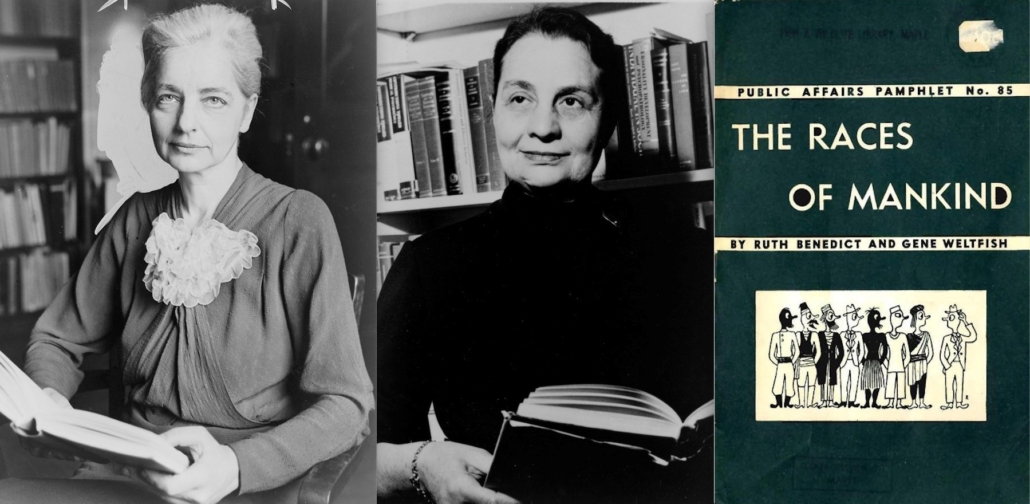
Figure 1: Boasian disciples Ruth Benedict and Gene Weltfish and their 1943 pamphlet The Races of Mankind
The “internationalist” racial views commonly promoted during the war are most prominently linked to Ruth Benedict and Regina (“Gene”) Weltfish, two disciples of Franz Boas and his school of cultural relativist anthropology, in a 1943 pamphlet titled The Races of Mankind. (Another Boasian anthropologist, “Ashley Montagu,” born Israel Ehrenberg, was the instigator of the similarly motivated 1950 UNESCO “Statement on Race,” which declared the racial nihilist creed that race and racial differences are nihil, literally nothing.) The pamphlet was written for the U.S. Army in an effort to change the racial views (what Wikipedia terms “racist beliefs”) of servicemen by indoctrination with race denialist propaganda.
By 1945 over 750,000 copies had been printed. It employed the common tactic of discrediting the reality of race and the importance of racial preservationism, and so supposedly justifying racial intermixture, by claiming that Europeans are too racially mixed, and so not “racially pure” enough by their extreme standard of “racial purity,” to be worth preserving. As Benedict and Weltfish expressed it:
[N]o European is a pure anything. A country has a population. It does not have a race. If you go far enough back in the populations of Europe you are apt to find all kinds of ancestors: Cro-Magnons, Slavs, Mongols, Africans, Celts, Saxons, and Teutons.[4]
Since Slavs, Celts, Saxons and Teutons are all European groups, a person who was a mixture of these groups would be a pure European, although not a pure Slav or Celt, etc., and it is either ignorant or dishonest to claim otherwise. Fortunately, this argument for promoting racial intermixture and opposing racial preservation is finally being conclusively discredited by modern autosomal genetic population studies, such as the 2014 study by Bryc, et. al.,[5] which shows the average proportion of European genetic ancestry among non-Hispanic European-Americans as 98.6 percent (Figure 2), and with 94 percent of European-Americans having no genetically measurable non-European ancestry. Regarding the pamphlet’s claimed African ancestry of Europeans, the Bryc study (p. 47) found that only 0.04% (i.e., 4 of 9,701 European individuals in the sample, or 1 in 2,425) of native Europeans in Europe carry 1% or more of African ancestry. Descent from Cro-Magnons is one of the distinguishing indicators of Europeans, and they are now referred to as “Early European modern humans” or “EEMH” in recognition of their at least proto-European bona fides. As for the claimed Mongol ancestry, the Mongol raids in the thirteenth century that reached as far west as Poland and Hungary withdrew as quickly as they came, and few of their rape victims would have survived to bear their children. So by any reasonable standard Europeans should be regarded as purely European.
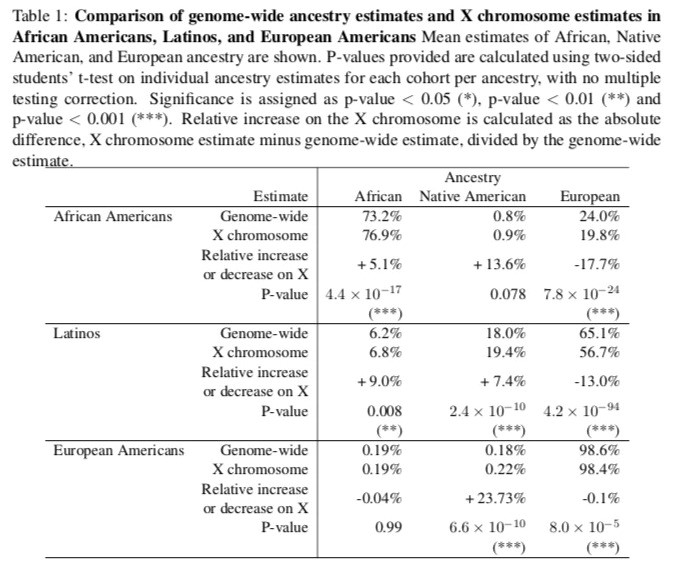
Figure 2: Table 1 from Katarzyna Bryc, Eric Y. Durand, et. al., The Genetic Ancestry of African Americans,Latinos, and European Americans across the United States
The Races of Mankind caused something of a political furor that lasted through the 1950s, with Congress banning its use by the army as communist propaganda, and one of its authors, Gene Weltfish, was blacklisted and investigated by Congress for her communist connections and activities.
The pamphlet represented the Boasian way of thinking about race, which later became the standard view in anthropology and was endorsed with a 1948 UNESCO declaration. At the time, its contention that race was socially constructed was politically controversial…[6]
The pamphlet also provided the basis for the animated short The Brotherhood of Man (1946; available here), a very revealing early example of the anti-White genocidal campaign, sponsored by the UAW-CIO. The short was ostensibly intended to promote racial integration and harmony among automobile and other industrial workers, but is totally devoted to promoting the goal of “one-world, one-race” through mass non-White immigration into White countries. It begins with the lines: “Everybody has his own special dream of what the world is going to be like in the future.…[O]ne of these days we’re going to wake up and find that people and places we used to just read about are practically in our own backyard.” Sure enough, the White American wakes up to find his home surrounded by immigrants from all over the world, each with their own type of home and style of clothing. After an initial struggle against intolerance, hate and racism, it ends with the reconciled White American and various mostly non-White immigrants marching off to work together in interracial solidarity and brotherhood, dressed in the appropriate attire for their roles as raceless interchangeable cogs in the corporate system.[7]
The 1946 animated short The Brotherhood of Man based on The Races of Mankind pamphlet
In the early 1950s the short’s screenwriters Ring Lardner, Jr. and Maurice Rapf, and animation director John Hubley were, like Gene Weltfish, blacklisted and investigated by Congress for their communist connections. Unfortunately, in the mid-1960s the course it advocated was effectively enacted into law.
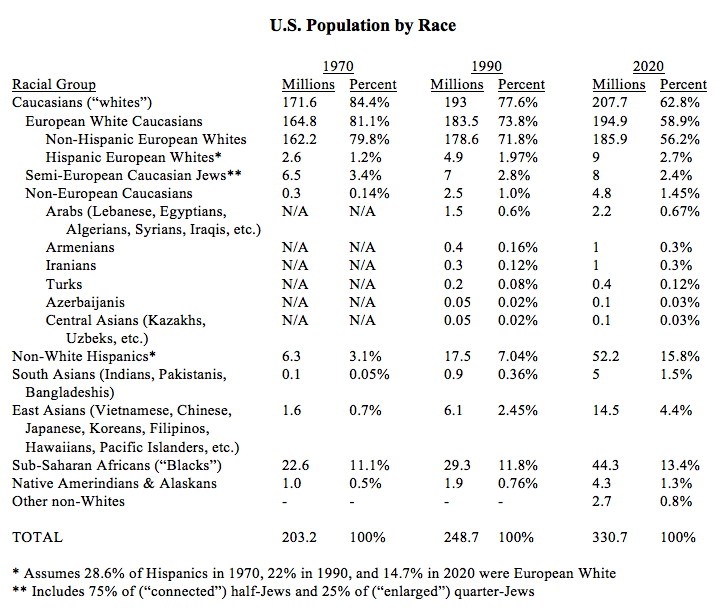
Figure 4: U.S. population by race as of December 6, 2020, as estimated by the author
Figure 4 shows the enormous changes in the racial proportions in the United States population resulting from the Immigration and Nationality (Hart-Cellar) Act of 1965 and the Immigration Act of 1990, which effected a racial transformation of the country that is still ongoing. The first opened the gate to massive non-White immigration and the second opened it wider, causing the non-White population to grow from 38.4 million or 18.9% of the population in 1970, to 65.2 million or 26.2% in 1990, to 135.8 million or 41.1% in 2020, an increase of 97.4 million in fifty years — 26.8 million in the twenty years 1970 to 1990, and 70.6 million in the thirty years from the 1990 Act to 2020. (The very large increase in the native Amerindian population during this period, which by definition could not have been caused by immigration and seems too large for natural increase alone, could be partly attributable to people changing their racial self-identification to Native American a la Elizabeth Warren, perhaps motivated by the declining status of White identity and the rewards of non-White identity.)
A similar racial transformation of the populations of the countries of Northwest Europe also began in the aftermath of World War II with much the same ethnic and ideological basis. In the United Kingdom, the 1939 Register counted 30,000 non-Europeans (i.e., persons of non-European racial type and ancestry, defined here as non-White) in England and Wales (i.e., not counting Scotland and Northern Ireland), about 0.073% of a population of 41 million. In the 1951 census there were 50,000 non-Europeans in the entire United Kingdom (i.e., including Scotland and Northern Ireland), about 0.104% of a population of 48 million. In the 1991 census there were over 4 million non-Europeans in the U.K., about 7% of the population of 57.4 million. By the 2011 census, two decades later, their number had more than doubled to 9 million (including about 900,000 non-European Caucasians who were counted as “white”) and their proportion of the population had doubled to 14% of 63.2 million. In that same year non-Europeans were 20% of the French population and both France and the U.K. were projected to be majority non-European by 2066, about one generation later than the projected date for the U.S.
A race can only exist in its full and complete form in a monoracial environment where its behavior, culture and institutions are not altered or distorted by the presence and influence of other races. When our countries are multiracialized, our existence as a race at the population level is destroyed. This is what has happened since the 1960s in all the countries of Northwest Europe and the New Europes founded and primarily settled by Northwest Europeans. Australia changed its laws to promote non-White immigration and multiracialism in 1973, Sweden in 1975, Canada in 1976. By the 1996 census, twenty years later, Canada had gone from less than 1% “visible (i.e., non-White) minorities” to 11.2%, or 3.2 million of a population of 28.5 million, and then in the 2016 census to 22.3% non-White, or 7.7 million of a population of 34.5 million, a 240% increase in twenty years. By 2020 Australia’s 3.2 million post-1973 non-indigenous non-Whites were 12.5% of its population. In the same year European Whites were already a minority of the U.S. population under the age of thirty, and the broader category of “whites” (i.e., including semi and non-European Caucasians) were projected to become a minority of the total population around 2043. By 2017 the non-European population of the eleven countries of Northwest Europe (Ireland, the United Kingdom, the Netherlands, Belgium, France, Germany, Switzerland, Austria, Norway, Denmark and Sweden) had increased from less than 200,000 in 1945 to 41 million, or 14.5% of their total combined population.
So like the New Europe of the United States, the other New Europes of Canada and Australia, along with the populations of Western Europe can no longer be accurately described as racially English, Irish, etc., but as multiracial populations. Their governments no longer serve the interests of their native populations but those of the rapidly growing non-White populations that are replacing them.
The best means to counter the too common myth of stasis is to present statistics for changes over a period of time and then to project or extrapolate these trends forward into the future. With regard to demographic racial change this includes the rate of intermixture, changes in that rate, and their demographic effects. Phineas Eleazar, writing on this subject at the Counter-Currents website[8], has projected, based on his computer simulations allowing 28 years per generation, that in four generations or 112 years whites (defined as persons more than 95% genetically white) will be reduced to 8% of the U.S. population, and in six generations or 168 years to 0%. Persons who are “mainly” white (defined as at least 80% genetically white) will only be 33% of the population in four generations, 13% in six and 0% in eight generations or 224 years. The white proportion in the new mixed-race population will continue to be diluted so that in about 12 generations or 336 years “there will be virtually no people who have majority [over 50% genetically white] European ancestry.” Per this simulation, with whites reduced to 0% of the population in 168 years, in about 90 years virtually no more whites will be born in the U.S.
Until 2013 the Centers for Disease Control (CDC) provided the statistics for interracial mixture from 1990 to the present. After 2013 the tables were removed and the information could only be accessed with specialized software. Fortunately, before this happened, I took screen captures of the tables for 1990 and 2013, seen in Figures 5 and 6. As in all government racial statistics, some information is incomplete or missing. European White Hispanics are not separated from non-White Hispanics and non-European or semi-European “whites” are not separated from European Whites. Also 8.4% in 1990, and 9% in 2013, of the fathers of the children born to Non-Hispanic white mothers were not racially identified (“not stated”) and so their race is unknown, and it would seem reasonable to suspect that the rate of intermixture would be higher in this group than where the father’s race is identified.

Figure 5: 1990 CDC (Centers for Disease Control) birth data by race of mothers (orange MRACEHISP column on right) and fathers (blue FRACESHISP line on top)

Figure 6: 2013 CDC birth data by race of mothers (orange MRACEHISP column on right) and fathers (blue FRACESHISP line on top)
In 1990 (Figure 5) Non-Hispanic white mothers had 2,626,500 children. The fathers of 221,855 of these children were not racially identified. Looking only at the 2,404,645 fathers who were racially identified, 2,279,870, or 94.8%, were Non-Hispanic white like the mothers, and 5.2% were of a different racial category than the mothers. In 2013 (Figure 6) Non-Hispanic white mothers had 2,129,126 children. Of the 1,937,590 fathers who were racially identified 1,709,863, or 88.24%, were Non-Hispanic white like the mothers, and 11.76% were of a different racial category than the mothers. In numbers of children, this would tally to White women having 136,578 mixed-race children in 1990 and 250,393 in 2013, while White men fathered 92,789 mixed-race children in 1990 and 167,506 in 2013.
The above rates of percentile increase are consistent with an approximate doubling of the racial intermixture rate every twenty years since 1950, which would extrapolate backward to a circa 2.6% rate in 1970 and 1.3% in 1950.[9] If this past rate of increase continued, it would reach 23.2% in 2030, 46.4% in 2050, and 92.8% in 2070. If the future rate of increase were reduced by 50% every twenty years, half of the historical postwar average, the rate would be 17.4% in 2030, 26.1% in 2050, 39.15% in 2070, 58.7% in 2090 and 88% in 2110.[10] This would be about the time the Eleazar simulation (see above) projects white births would virtually stop, indicating his simulation falls between these two rates of increase.
I have previously estimated, based on the above assumptions, that about 2.1 million mixed-race children were born to White mothers in the 20-year period 1970-89 and 5.8 million more in the 28-year period 1990-2017, totaling 7.9 million during those 48 years.[11] Based on the father vs. mother intermixture ratios for 1990 and 2013 we can estimate that White men fathered about 3.9 million mixed-race children in the 28-year period 1990–2017 and 5.37 million in the 48 year period 1970–2017. This would indicate circa 10.5 million mixed-race persons with one White parent born in the 30-year period 1990–2020 and 14.1 million in the 50-year period 1970–2020. At an average of two mixed-race children per parent, this would mean about 7 million Whites have mixed-race children under the age of 50 and circa 5.25 million have mixed-race children under the age of 30.
The information from these CDC tables can help us to project the future course of racial intermixture as a dynamic process and avoid the common temptation to assume an unchanging state of stasis. As the past has recorded a pattern of acceleration in the process of White racial replacement, all indications are that the Anti-White Coalition, if they are able (i.e., not prevented by rising White opposition), will continue to make every effort to accelerate this process in the future.
These numbers, whether past, present or projected, must be regarded as extremely disturbing to any White person who wants their race to live and continue to exist, or indeed for any racial preservationist. But those who are supporting the causes of this destruction, are — at least where the White race is concerned — the opposite of racial preservationists. They are in fact race destroyers.
Factors Determining the Rates of Racial Intermixture
Since World War II, all the causative factors of our replacement have been accelerating, including the terminal causative factor of intermixture. Racial changes in the population, the measure of our replacement and destruction, are primarily determined by three causative factors: birth rates, immigration rates, and the rate of intermixture between the different racial elements in the population. Studies that project demographic change often greatly underestimate the rate of intermixture between the different racial elements as a result of a crucial flaw in their methodology. They typically either do not allow for the effects of racial intermixture at all, assigning all projected births to the same race as their mother regardless of the race of their father and the child’s own actual racial identity; they don’t distinguish between different racial categories with sufficient accuracy (such as the U.S. Census Bureau counting 91.7% of Hispanics or Latinos as “white,” and therefore their children with European Whites as White rather than mixed, when probably only 10—15% of Hispanics are White by European standards); or they base their projections on the current rate of intermixture, not allowing for the continuous increase in the rate of intermixture since 1950. This is a critical omission, for although the increase in the rate of racial intermixture cannot be predicted with certainty, it is likely to be dramatic if past trends continue.
The rate of intermixture is itself determined by three causative factors: the relative proportions of different racial elements in the population; the extent of contact between the races; and the degree of racial discrimination in the selection of mates.
- The rate of intermixture is effectively limited by the proportions of different races in a population. In a monoracial society different races are not present, resulting in reproductive isolation and the effective prevention of intermixture. Multiracialism is the primary cause for intermixture and the precondition required for the others. If other races are present only as a very small minority the rate of intermixture is necessarily limited to a low level. When non-White races are present in numbers approaching, equal to, or exceeding the number of Whites the potential rate of intermixture for Whites is effectively unlimited. It is not coincidental that the rate of intermixture has increased along with increases in the proportion of non-Whites in the population.
- Within the given proportions of different races in a population, the actual rate of intermixture is determined by the extent of contact between the races and the degree of racial discrimination in the selection of mates. The practice of de jure (in the South) and de facto racial segregation before the 1960s significantly reduced racial intermixture.
- If contact between the races is extensive, there is no reproductive isolation and racial discrimination in the selection of mates becomes the only effective limit on the rate of intermixture. Without racial discrimination in the selection of mates, if two races are present in equal numbers, and contact between and within the races is equally extensive, so that 50% of the pool of potential mates are from each race, there should be a 50% rate of intermixture. If the degree of racial discrimination is 50%, the rate of intermixture would be 25%. This discrimination can be politically, religiously, socially and culturally sanctioned and even enforced, as it was before the 1960s, or morally prohibited as it has since the 1960s. In the latter case, without any external support, the continued practice of such discrimination is totally dependent on the racial sense of the individual.
The rate of intermixture has been increasing and is likely to continue to do so due to a number of interrelated and interacting trends, including increasing proportions of other races in the population and thus in the pool of potential mates, more extensive contact between the races, a decreasing level of racial discrimination in the selection of mates due to social, cultural and ideological influences, e.g., the social stigma attached to racial sexual discrimination as “racism,” as well as the “snowballing” effect — the increasing momentum in the rate of intermixture — caused by the increasing numbers of mixed-race persons themselves.
Without significant change that favors racial preservationism, projections must assume the present direction will continue, and it is just the speed that is less certain. But whether slower or faster, the result or endgame is the same, per the old adage, “If we don’t change direction we’ll end up where we’re headed.” All that differs is the time it takes us to get there. We can predict that whatever the speed of our destruction, as time passes the effects and consequences of multiracialism will increase and grow ever stronger. According to official projections, which do not take into account an estimated 20 million or more illegal immigrants, “whites” will become a minority in the U.S. soon after 2040. Official projections of when Whites will become minorities in their Northwest European homelands generally vary between 2060 and 2080.
Go to Part 2.


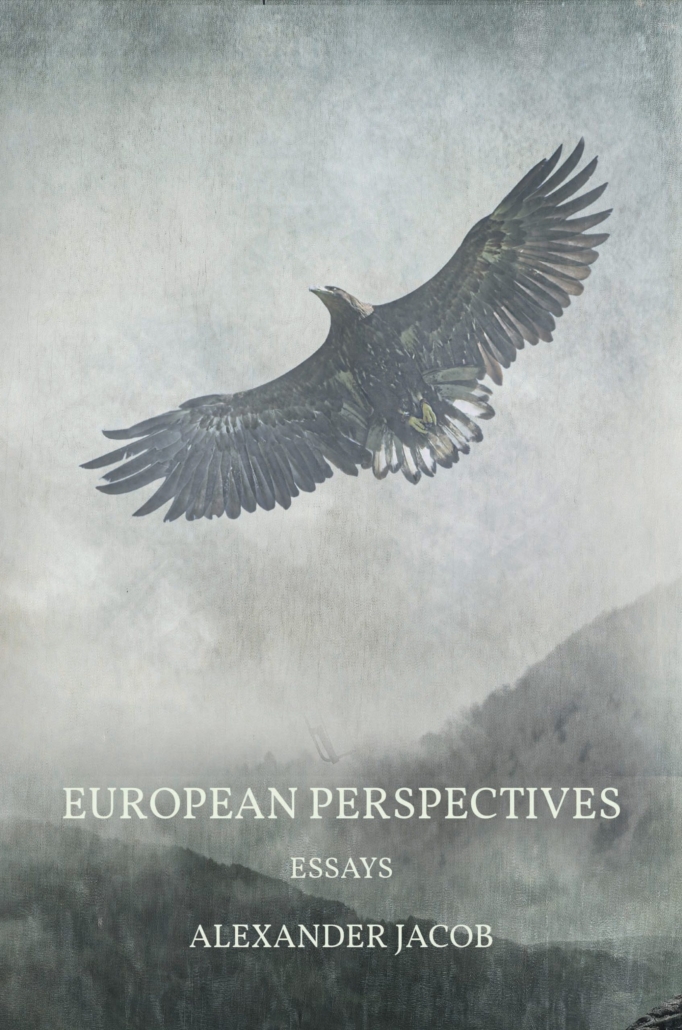
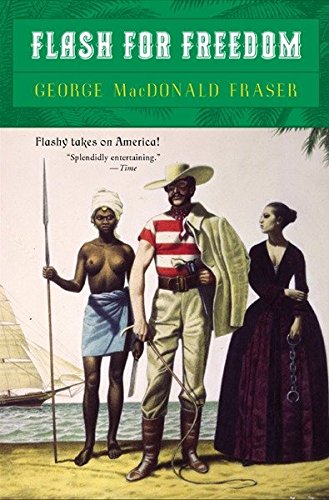 Front cover of
Front cover of 


